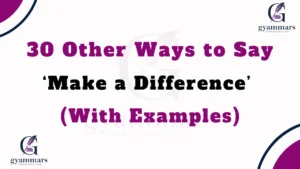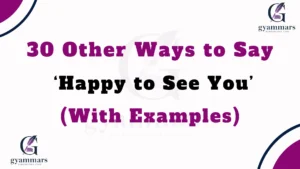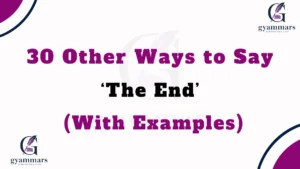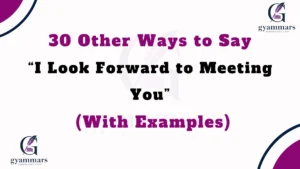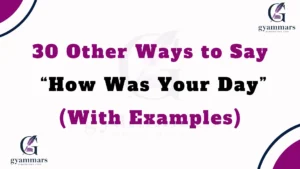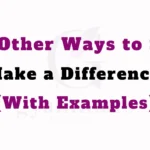Finding the right words to express care, patience, or a need to de-escalate a situation can make all the difference in communication. Phrases like “Calm Your Tits” can feel humorous or blunt, but they can also come across as rude or insensitive. Using thoughtful alternatives allows you to communicate the same message in a more empathetic, professional, or lighthearted way, making your words feel considered and meaningful. Below, we explore 30 other ways to convey the same idea with examples and guidance.
What Does “Calm Your Tits” Mean?
Definition: “Calm Your Tits” is an informal, slang phrase used to tell someone to relax, stop overreacting, or chill out.
Detailed Explanation: It’s often used in humorous or casual conversations but can come off as offensive depending on tone and context.
Scenario Example: Your friend is panicking about a minor issue: “Calm your tits! It’s not that big of a deal.”
Best Use: Among close friends in casual settings where humor is understood.
Tone: Playful, informal, potentially sarcastic.
Additional Notes: Avoid in professional or formal settings; may be seen as disrespectful.
Is It Professional/Polite to Say “Calm Your Tits”?
Definition: Using this phrase in professional or formal contexts is not considered polite.
Detailed Explanation: The language is slang, informal, and contains mild vulgarity. It may be perceived as rude or inappropriate.
Scenario Example: Telling a coworker, “Calm your tits” during a meeting is likely to offend.
Best Use: Reserved for informal conversations among friends.
Tone: Casual, irreverent.
Additional Notes: Use alternatives for professional or sensitive contexts.
Pros and Cons
Pros:
- Humorous and blunt, conveys urgency or emotional release.
- Can lighten the mood among friends.
Cons:
- Offensive or inappropriate in formal settings.
- May escalate tension if misunderstood.
- Limited to casual, friendly contexts.
Synonyms For ‘Calm Your Tits’
- Take a Deep Breath
- Chill Out
- Relax
- Take It Easy
- Keep Calm
- Stay Cool
- Don’t Worry So Much
- Simmer Down
- Settle Down
- Take a Moment
- Step Back
- Cool Your Jets
- Ease Up
- Loosen Up
- Don’t Get Heated
- Keep Your Cool
- Calm Down
- Let It Go
- Don’t Sweat It
- Stay Relaxed
- Breathe Out
- Unwind
- Don’t Overthink
- Lighten Up
- Take It Slow
- De-stress
- Stay Composed
- Let’s Pause
- Hold Your Horses
- Rest Easy
1. Take a Deep Breath
Definition: Encourage someone to pause and regain composure.
Detailed Explanation: Suggests a calm, mindful approach rather than demanding it.
Scenario Example: “Take a deep breath before you respond; it’ll help you think clearly.”
Best Use: Everyday conversations, mildly tense situations.
Tone: Calm, supportive.
Additional Notes: Non-confrontational, universally polite.
2. Chill Out
Definition: Informally ask someone to relax or calm down.
Detailed Explanation: Casual and friendly, commonly used among peers.
Scenario Example: “Hey, chill out! Everything’s under control.”
Best Use: Informal settings with friends.
Tone: Lighthearted, playful.
Additional Notes: Can sound dismissive if said abruptly.
3. Relax
Definition: Direct, simple suggestion to ease tension.
Detailed Explanation: Neutral and widely acceptable.
Scenario Example: “Relax, we’ll figure it out together.”
Best Use: Both casual and semi-formal contexts.
Tone: Calm, reassuring.
Additional Notes: Safe alternative in most situations.
4. Take It Easy
Definition: Ask someone to slow down or de-stress.
Detailed Explanation: Encourages a less urgent, more relaxed attitude.
Scenario Example: “Take it easy; there’s no need to panic.”
Best Use: Casual conversations, friendly advice.
Tone: Friendly, laid-back.
Additional Notes: Good for lowering tension without being confrontational.
5. Keep Calm
Definition: Encourage maintaining composure and rational thinking.
Detailed Explanation: Suggests thoughtful problem-solving rather than emotional reactions.
Scenario Example: “Keep calm, we’ll get through this together.”
Best Use: Can be used in professional or casual settings.
Tone: Supportive, encouraging.
Additional Notes: Widely recognized phrase; neutral.
6. Stay Cool
Definition: A casual request to remain calm and collected.
Detailed Explanation: Often used in informal, friendly contexts.
Scenario Example: “Stay cool, you’re doing fine.”
Best Use: Among friends or colleagues in light contexts.
Tone: Casual, reassuring.
Additional Notes: Adds a friendly, approachable tone.
7. Don’t Worry So Much
Definition: Advise someone to ease their anxiety or concern.
Detailed Explanation: Focuses on reassurance and empathy.
Scenario Example: “Don’t worry so much; everything will work out.”
Best Use: Supportive conversations.
Tone: Empathetic, gentle.
Additional Notes: Helps validate feelings while calming.
8. Simmer Down
Definition: Ask someone to calm their emotions.
Detailed Explanation: Slightly playful, informal.
Scenario Example: “Simmer down; it’s not worth getting upset over.”
Best Use: Casual contexts, humorous tone.
Tone: Lighthearted, casual.
Additional Notes: Avoid in very formal settings.
9. Settle Down
Definition: Encourage someone to relax or behave calmly.
Detailed Explanation: Neutral, widely accepted.
Scenario Example: “Settle down, everyone. We’ll start the meeting shortly.”
Best Use: Family, friends, or group contexts.
Tone: Neutral, calm.
Additional Notes: Suitable for both casual and semi-formal use.
10. Take a Moment
Definition: Suggest pausing to collect oneself.
Detailed Explanation: Implies thoughtfulness and self-regulation.
Scenario Example: “Take a moment before you respond; it’ll help.”
Best Use: Supportive, calming interactions.
Tone: Gentle, reflective.
Additional Notes: Encourages mindfulness.
11. Step Back
Definition: Suggest someone pause and gain perspective.
Detailed Explanation: Implies taking a mental or emotional step away from the situation to regain composure.
Scenario Example: “Step back for a minute; you’ll see it’s not as bad as it seems.”
Best Use: Calm, reflective situations with friends or colleagues.
Tone: Supportive, gentle.
Additional Notes: Encourages thoughtful responses rather than impulsive reactions.
12. Cool Your Jets
Definition: Informal way to ask someone to slow down and relax.
Detailed Explanation: Slightly playful, humorous, and old-fashioned slang.
Scenario Example: “Cool your jets; there’s plenty of time to finish the project.”
Best Use: Casual conversations among peers.
Tone: Playful, lighthearted.
Additional Notes: Avoid in formal settings; adds humor.
13. Ease Up
Definition: Request someone to reduce stress or intensity.
Detailed Explanation: Suggests taking a less aggressive or intense approach.
Scenario Example: “Ease up, there’s no need to get frustrated over this.”
Best Use: Friendly, informal situations.
Tone: Gentle, supportive.
Additional Notes: Neutral enough for informal professional settings.
Also Read This: 30 Other Ways to Say “Sounds Good” (With Examples)
14. Loosen Up
Definition: Encourage someone to relax and be less tense.
Detailed Explanation: Often used to lighten the mood or reduce rigidity.
Scenario Example: “Loosen up a bit; it’s just a fun game.”
Best Use: Social gatherings, informal contexts.
Tone: Friendly, casual.
Additional Notes: Lighthearted and non-confrontational.
15. Don’t Get Heated
Definition: Advise someone to control their rising anger or frustration.
Detailed Explanation: Neutral phrasing emphasizing emotional self-regulation.
Scenario Example: “Don’t get heated; let’s talk this through calmly.”
Best Use: Semi-formal and professional settings.
Tone: Calm, composed.
Additional Notes: Polite alternative for tense discussions.
16. Keep Your Cool
Definition: Remind someone to stay calm under pressure.
Detailed Explanation: Suggests maintaining emotional balance and composure.
Scenario Example: “Keep your cool; panicking won’t help.”
Best Use: Both casual and professional contexts.
Tone: Encouraging, supportive.
Additional Notes: Universally understood; safe in most settings.
17. Calm Down
Definition: Direct request to reduce emotional intensity.
Detailed Explanation: Common and widely understood; neutral in tone depending on delivery.
Scenario Example: “Calm down, we can solve this problem together.”
Best Use: Casual and everyday situations.
Tone: Neutral, can be firm if needed.
Additional Notes: Avoid sounding abrupt; pair with reassurance.
18. Let It Go
Definition: Suggest someone release frustration or anger.
Detailed Explanation: Emphasizes moving past conflict or stress rather than dwelling on it.
Scenario Example: “Let it go; holding onto this won’t help.”
Best Use: Personal or friendly interactions.
Tone: Gentle, empathetic.
Additional Notes: Encourages emotional resilience.
19. Don’t Sweat It
Definition: Reassure someone that the issue isn’t worth worrying about.
Detailed Explanation: Casual phrase often used to comfort and lighten the mood.
Scenario Example: “Don’t sweat it; mistakes happen to everyone.”
Best Use: Informal conversations, reassuring tone.
Tone: Casual, supportive.
Additional Notes: Friendly and non-confrontational.
20. Stay Relaxed
Definition: Encourage a state of calm and ease.
Detailed Explanation: Direct but polite, emphasizing mental and emotional control.
Scenario Example: “Stay relaxed; you’re handling this well.”
Best Use: Casual or semi-formal contexts.
Tone: Calm, supportive.
Additional Notes: Safe alternative in most situations.
21. Breathe Out
Definition: Encourage someone to release tension through breathing.
Detailed Explanation: Focuses on physical action to reduce stress.
Scenario Example: “Breathe out slowly; it’ll help you feel better.”
Best Use: Mindfulness or high-stress situations.
Tone: Gentle, soothing.
Additional Notes: Pairs well with deep-breathing exercises.
22. Unwind
Definition: Suggest someone relax after stress or tension.
Detailed Explanation: Implies taking time for oneself to restore calm.
Scenario Example: “Take a walk and unwind; it’ll clear your head.”
Best Use: Friendly advice or self-care contexts.
Tone: Relaxed, supportive.
Additional Notes: Encourages a healthy approach to stress.
23. Don’t Overthink
Definition: Advise against excessive worrying or rumination.
Detailed Explanation: Focuses on preventing unnecessary stress or anxiety.
Scenario Example: “Don’t overthink it; you’ve done your best.”
Best Use: Casual and supportive interactions.
Tone: Empathetic, reassuring.
Additional Notes: Encourages rational thinking.
24. Lighten Up
Definition: Suggest someone take things less seriously.
Detailed Explanation: Encourages humor or a more relaxed attitude.
Scenario Example: “Lighten up; it’s just a game.”
Best Use: Informal and playful contexts.
Tone: Playful, friendly.
Additional Notes: Avoid if the issue is serious; tone is crucial.
25. Take It Slow
Definition: Encourage a calm, measured approach.
Detailed Explanation: Focuses on reducing rush and tension.
Scenario Example: “Take it slow and read through the instructions carefully.”
Best Use: Helpful guidance, supportive advice.
Tone: Calm, encouraging.
Additional Notes: Neutral, suitable for work or personal life.
26. De-stress
Definition: Suggest activities or mindset to reduce stress.
Detailed Explanation: Focuses on practical or emotional relaxation.
Scenario Example: “Take a break and de-stress before making a decision.”
Best Use: Everyday advice, professional or personal.
Tone: Supportive, calming.
Additional Notes: Can include actionable suggestions.
27. Stay Composed
Definition: Encourage maintaining emotional stability.
Detailed Explanation: Implies self-control in tense or challenging situations.
Scenario Example: “Stay composed; we’ll get through this issue together.”
Best Use: Semi-formal or professional contexts.
Tone: Calm, reassuring.
Additional Notes: Polite and professional phrasing.
28. Let’s Pause
Definition: Suggest taking a break before reacting further.
Detailed Explanation: Encourages reflection and avoids impulsive reactions.
Scenario Example: “Let’s pause for a moment and think this through.”
Best Use: Group discussions, tense conversations.
Tone: Neutral, thoughtful.
Additional Notes: Collaborative and calming.
29. Hold Your Horses
Definition: Informal way to ask someone to wait and calm down.
Detailed Explanation: Playful idiom encouraging patience.
Scenario Example: “Hold your horses; we haven’t made a decision yet.”
Best Use: Casual or humorous interactions.
Tone: Playful, lighthearted.
Additional Notes: Friendly and non-offensive in informal contexts.
30. Rest Easy
Definition: Encourage someone to relax without worry.
Detailed Explanation: Suggests assurance and peace of mind.
Scenario Example: “Rest easy; everything is under control.”
Best Use: Personal reassurance, gentle tone.
Tone: Calm, soothing.
Additional Notes: Polite, comforting alternative.
Conclusion
Language shapes how people receive your message. While “Calm Your Tits” might work in playful conversations with close friends, it often risks sounding rude, dismissive, or unprofessional. Choosing kinder, more thoughtful alternatives helps you communicate with empathy, respect, and clarity. Whether you’re trying to ease tension in a meeting, comfort a stressed friend, or add a little humor to a casual chat, these 30 alternatives give you flexibility. The right phrase ensures your words feel supportive instead of offensive, keeping conversations productive and relationships positive.
FAQs About “Calm Your Tits” and Its Alternatives
1. Is “Calm Your Tits” offensive?
Yes, it can be. While some people find it funny in casual settings, others may view it as disrespectful or vulgar.
2. Can I use “Calm Your Tits” in a professional environment?
No. It’s considered slang and unprofessional. Stick to polite alternatives like “Stay composed” or “Take a deep breath.”
3. What are polite alternatives I can use at work?
Safe choices include: “Keep calm,” “Let’s pause,” “Stay composed,” and “Take a moment.”
4. What are funny but friendly alternatives for friends?
Playful options include: “Cool your jets,” “Hold your horses,” and “Lighten up.”
5. Why should I use alternatives instead of slang?
Using thoughtful alternatives helps you avoid misunderstandings, prevents hurting someone’s feelings, and makes your communication more effective and inclusive.

“Mia Rose at Grammar Synonyms is your ultimate guide to mastering language with style and precision. Whether you’re looking to enhance your vocabulary, perfect your grammar, or discover the ideal synonym, Mia Rose offers expert resources and creative solutions to help you express yourself flawlessly. With Grammar Synonyms, unlock a world of language possibilities and elevate every piece of writing you create.

